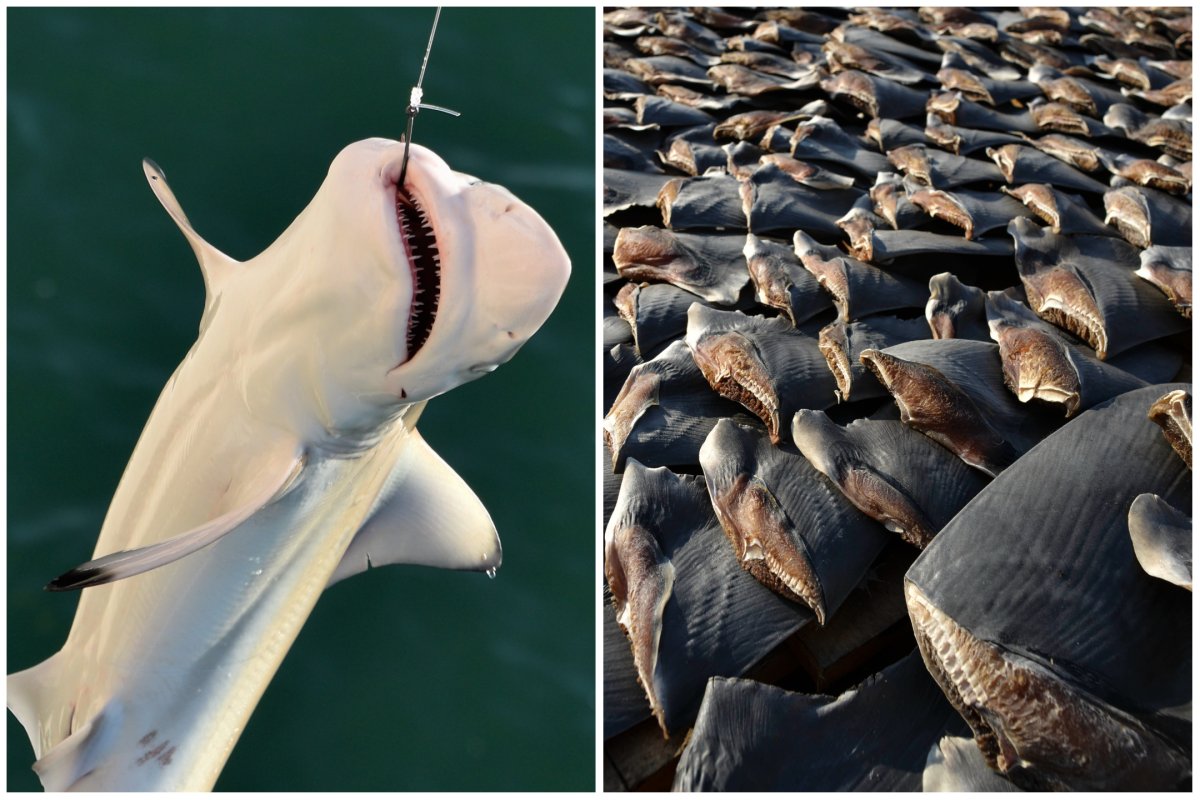Sharks are regarded with both fascination and fear in the popular imagination—at least when it comes to huge predators such as the great white. But the reality is that humans pose far more of a threat to these majestic marine creatures than they do to us.
A study published in the journal Marine Policy in 2013 estimated that approximately 100 million sharks are killed every year by human activities. This compares to the less-than-10 people that die as a result of shark attacks every year.
Boris Worm, an author of the 2013 study from Dalhousie University in Halifax, Canada, told Newsweek that this research has since been updated and the 100 million figure still appears to stand—although the latest developments will not be published in a peer-reviewed journal until later this year.
"Unfortunately mortality has not decreased globally speaking up to the year 2019," Worm said.

The advance of the global fishing industry coupled with relatively slow growth and reproductive rates has resulted in progressive declines of chondrichthyan, or cartilaginous, fishes—a group of animals that contains sharks, skates and rays—around the world.
Around one in three of the more than 1,100 known cartilaginous fishes are now threatened with extinction, figures from a 2021 paper published in the journal Current Biology show.
Overfishing affects all of these threatened species and is the sole threat for 67 percent of them but it harms many more that are not yet facing the risk of extinction. Other significant threats include habitat loss and degradation, climate change and pollution.
"Sadly, three species have not been seen in many years and are thought to be extinct already," Worm said.
Coastal species in tropical and subtropical waters appear to be disproportionately threatened, the study indicates.
The declines in cartilaginous fish populations have been particularly pronounced for sharks, due to their "exceptional" vulnerability to overfishing and increasing demand for shark products. Sharks are killed both as a result of deliberate hunting or incidental capture—what is known as bycatch.
The biggest driver of shark killings around the world is the demand for shark products, which used to be focused on the very valuable fins, but now includes their meat, liver oil and cartilage.
"The demand for shark meat especially has increased over the last decade or so," Worm said.
In the Marine Policy study, the researchers estimated the combined weight of all the sharks killed as a result of reported and unreported fishing activities, coming to a total figure of 1.44 million tons for the year 2000 and 1.41 million tons for 2010.
When the scientists combined this figure with data on average shark weights, this gave them a total annual mortality estimate of around 100 million individual sharks in 2000 and 97 million in 2010, with a total range of possible values stretching from 63 to 273 million sharks per year.
The researchers also worked out exploitation rates for individual shark populations, finding that they exceeded the average rebound rates for many of them.
Declines in shark populations could have negative effects on marine ecosystems for which they provide key services.
"Sharks play important ecosystem roles as large predators who keep other populations in check, and partly control their abundance and where they can safely go," Worm said. "They contribute to the stability of marine ecosystems."
As a result, management and conservation efforts are becoming increasingly important in order to reduce the number of shark deaths worldwide.
Many initiatives to protect shark populations have been implemented around the world and are working well in some regions and for some species, Worm said.
For example, in 2009, the Micronesian nation of Palau in the Western Pacific designated its national waters as the world's first shark sanctuary.
"Today, a total of 17 sanctuaries have been created around the world, this includes popular dive destinations such as the Maldives and Bahamas, where shark mortality is very low as these species are well protected," Worm said.
"Similarly, large-scale marine protected areas can safeguard many threatened species, including sharks, for example in the northwest Hawaiian Islands where protection from all fishing has recently been expanded."
Strong fishing regulations have also contributed to the recovery of some species, for example in the United States.
"White sharks are a good example of a species that is now recovering on both coasts of that country," Worm said. "Internationally, the Convention on Trade in Endangered Species (CITES) has recently listed dozens of threatened shark species under its trade ban, which are an effective tool in species conservation. Likewise, the U.S. just followed Canada in banning all trade with shark fins, the most valuable part of most sharks."
Uncommon Knowledge
Newsweek is committed to challenging conventional wisdom and finding connections in the search for common ground.
Newsweek is committed to challenging conventional wisdom and finding connections in the search for common ground.
About the writer
Aristos is a Newsweek science reporter with the London, U.K., bureau. He reports on science and health topics, including; animal, ... Read more
To read how Newsweek uses AI as a newsroom tool, Click here.








